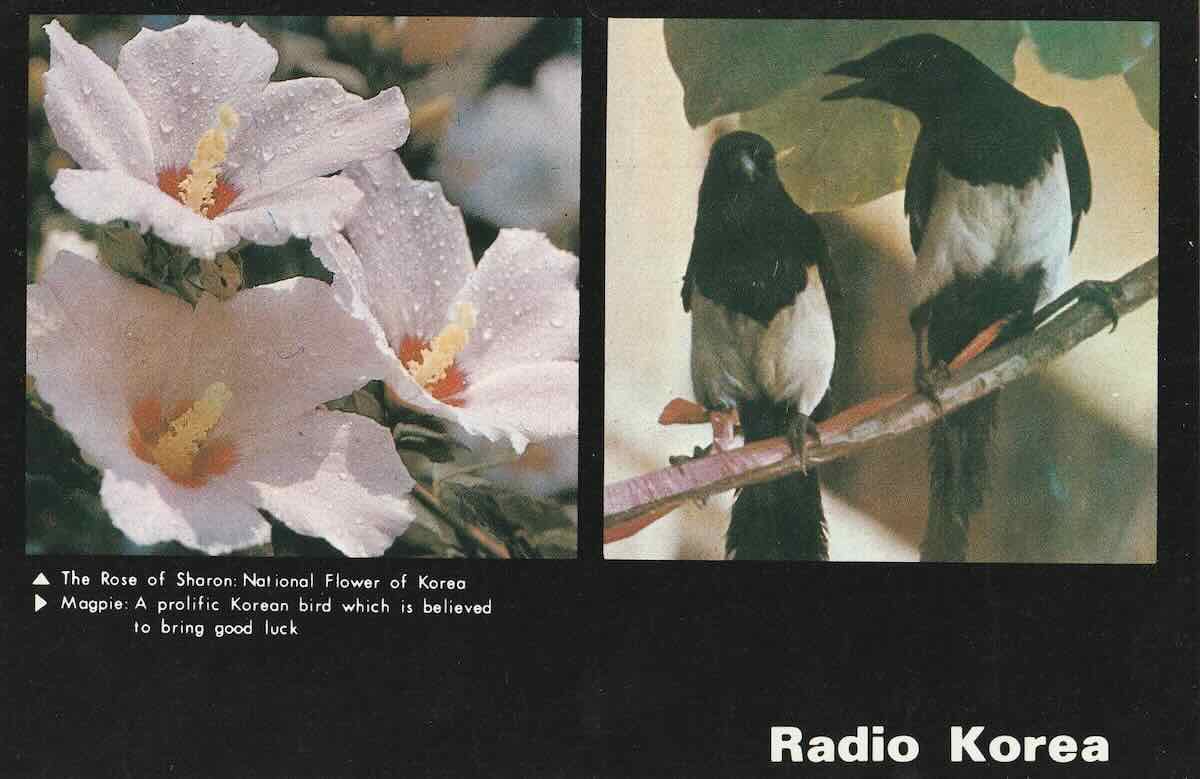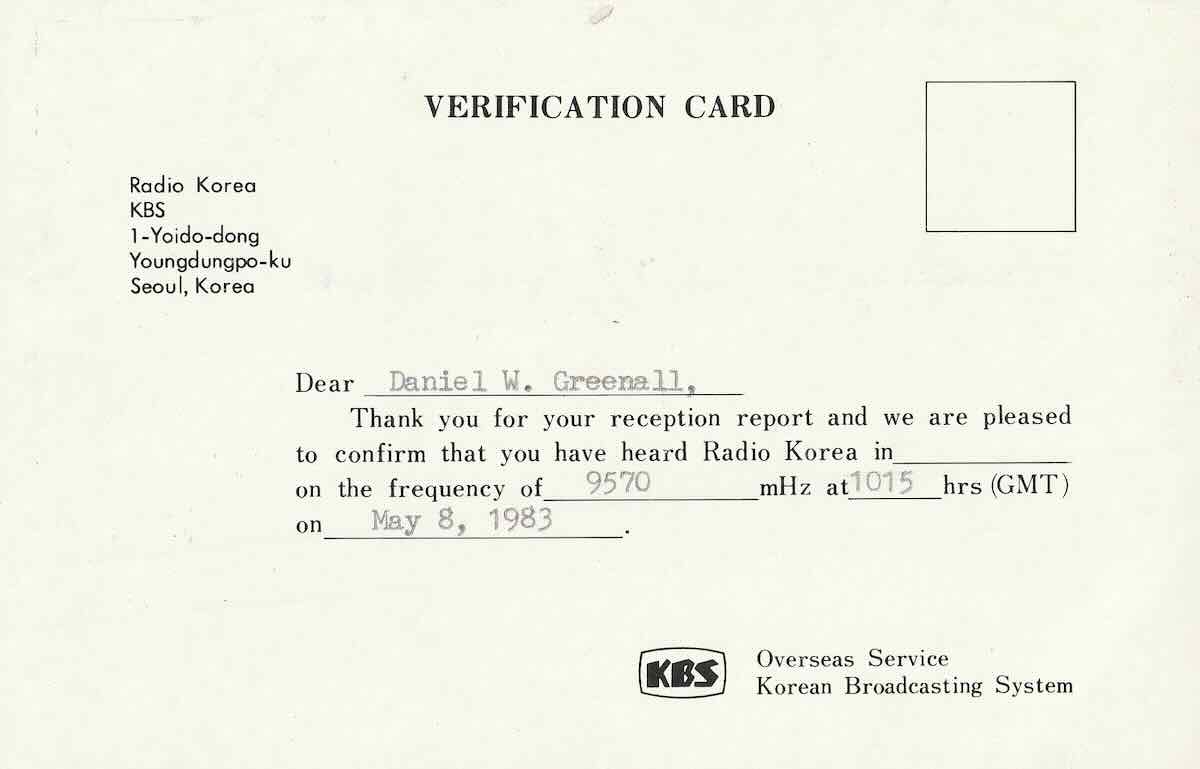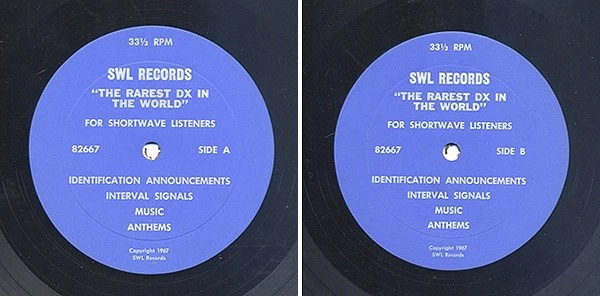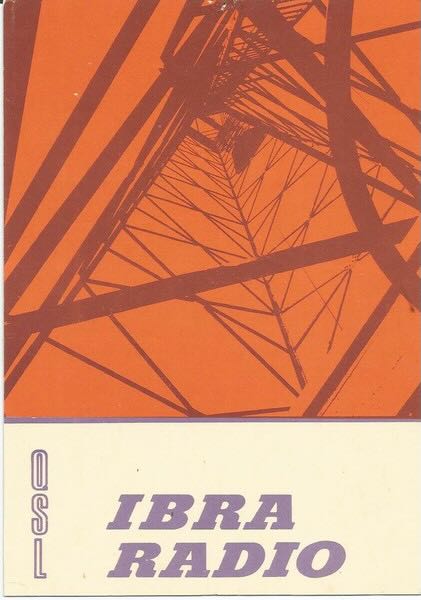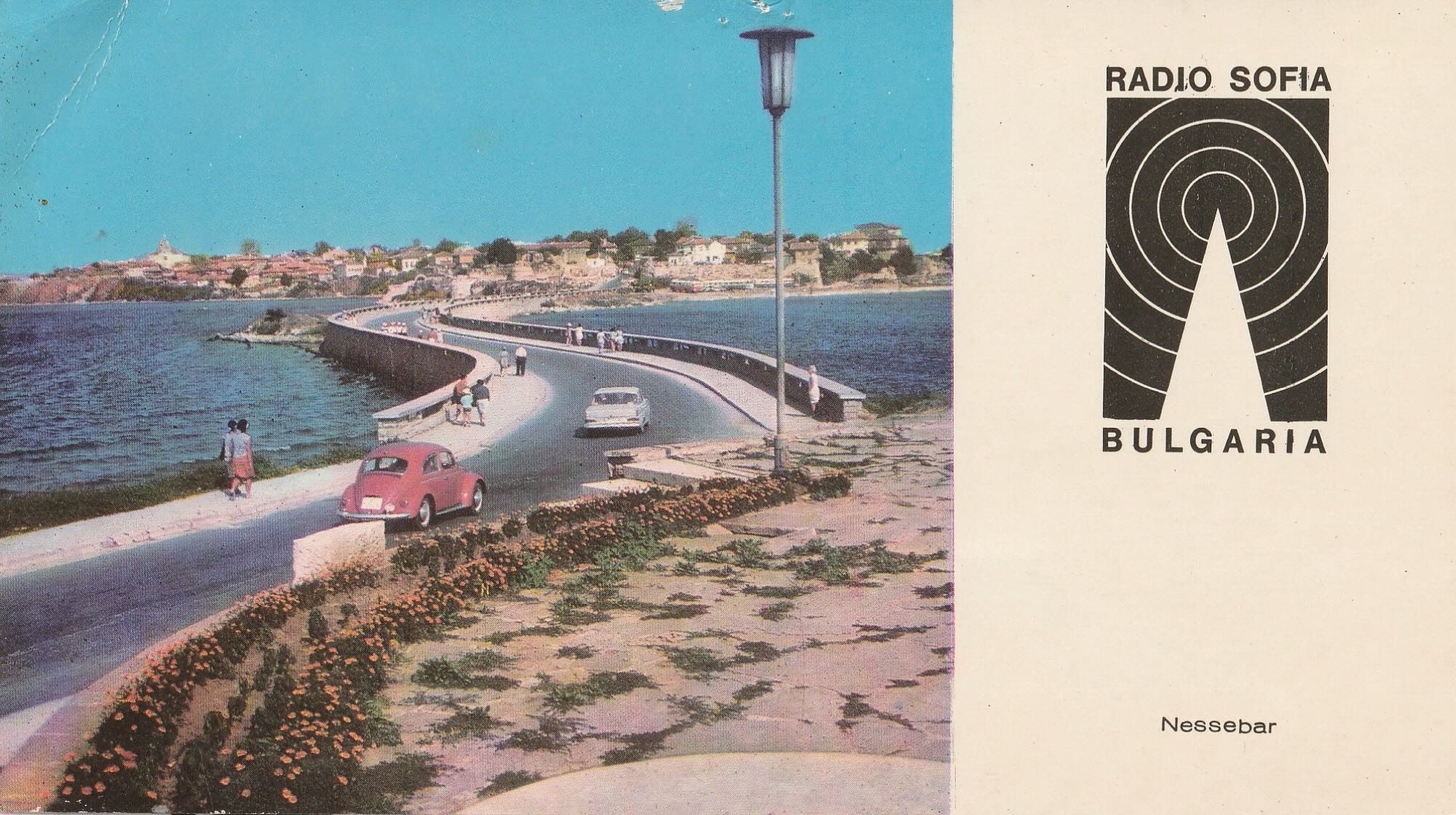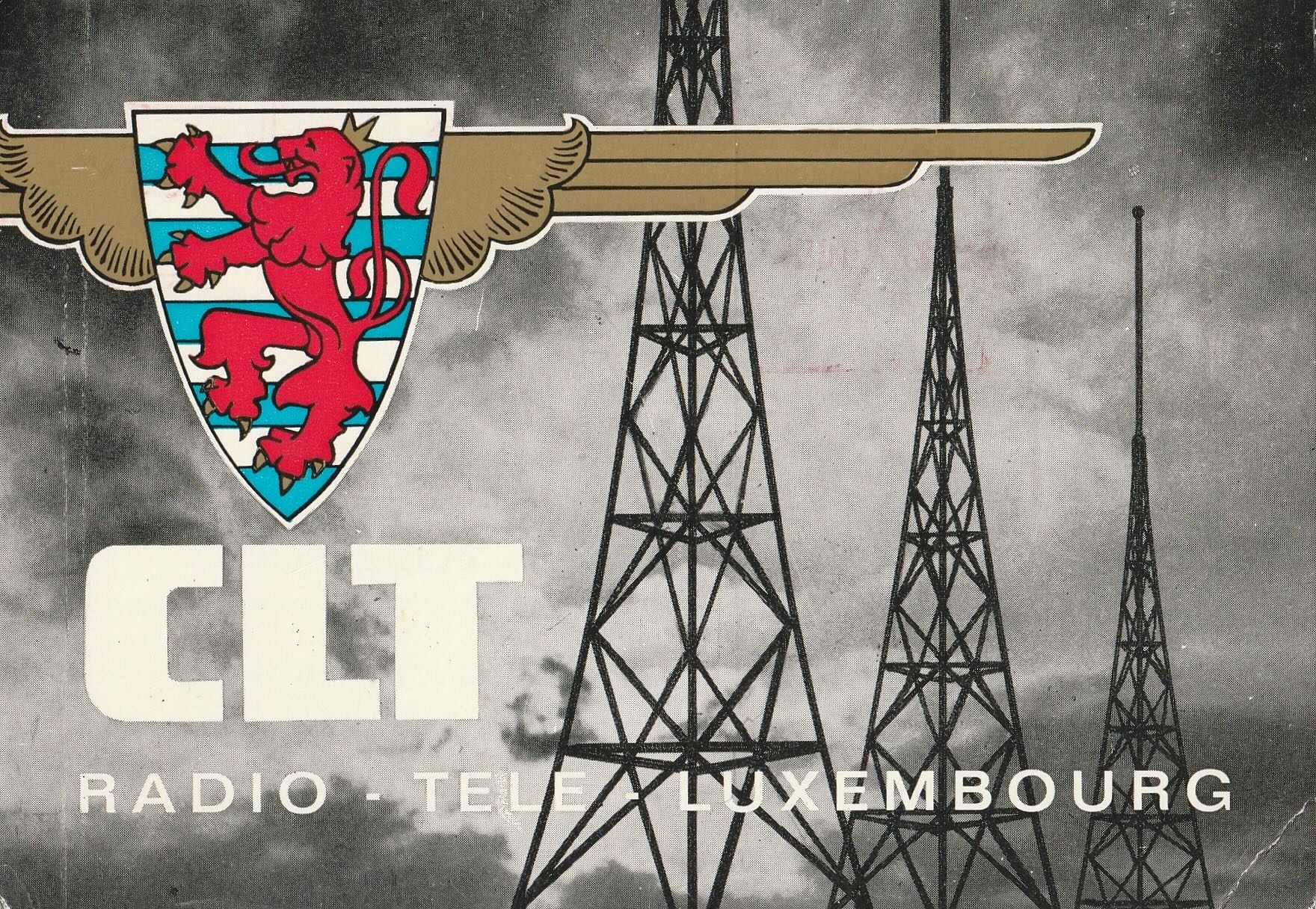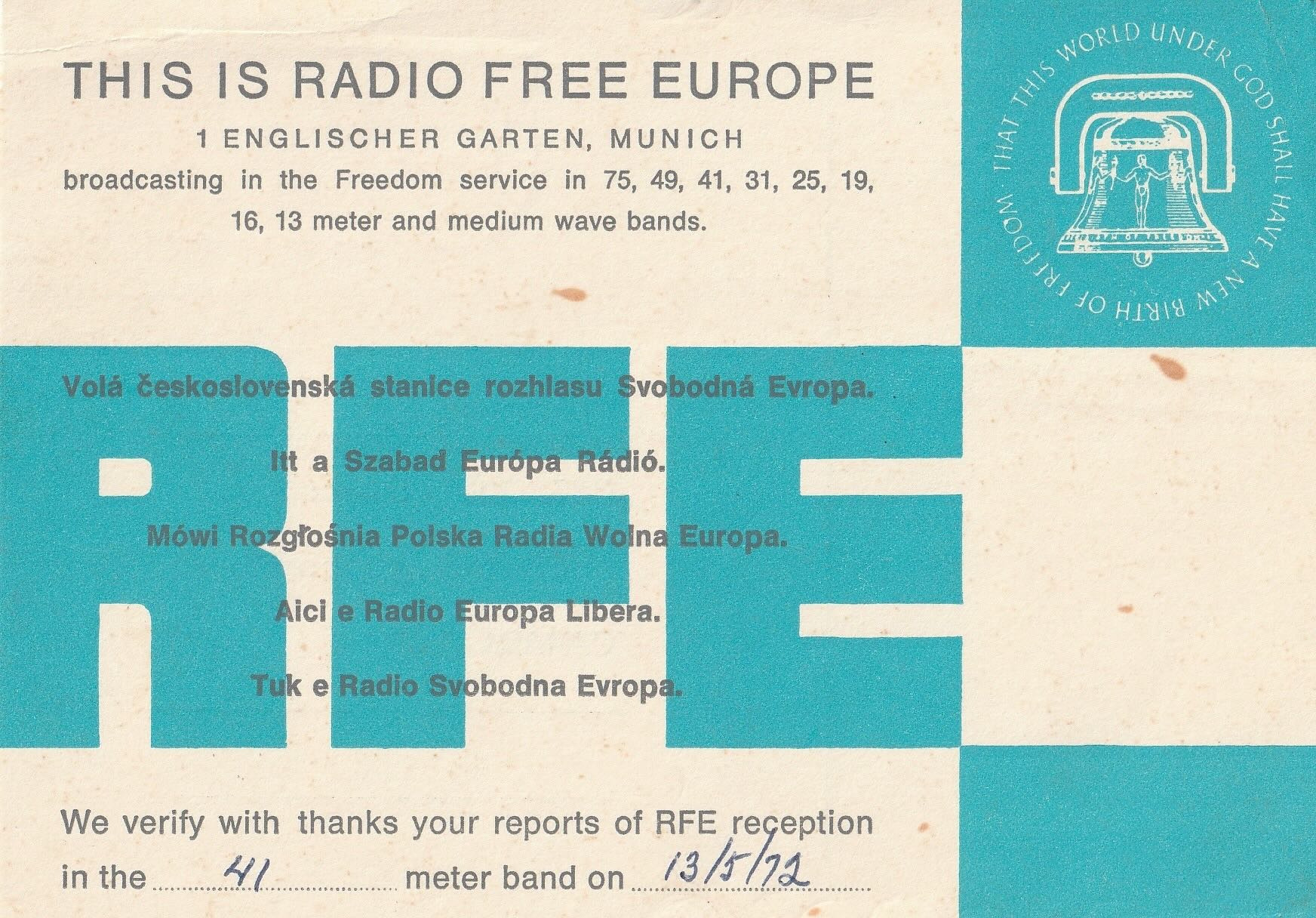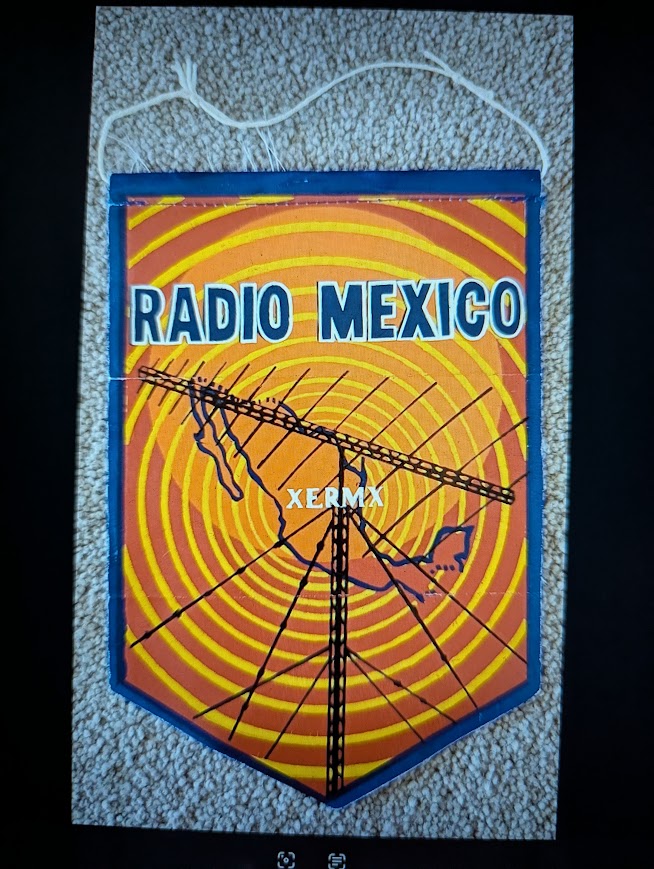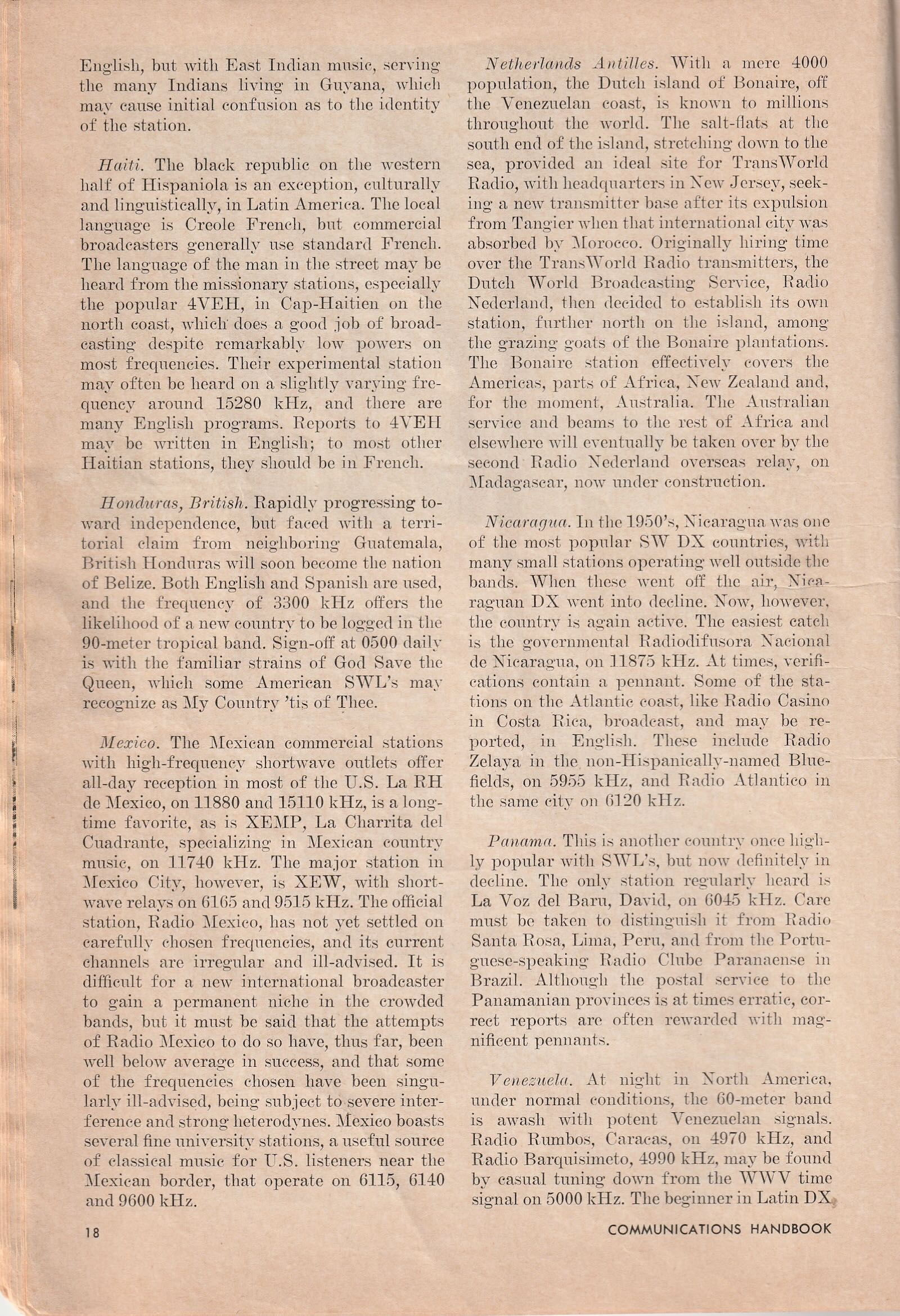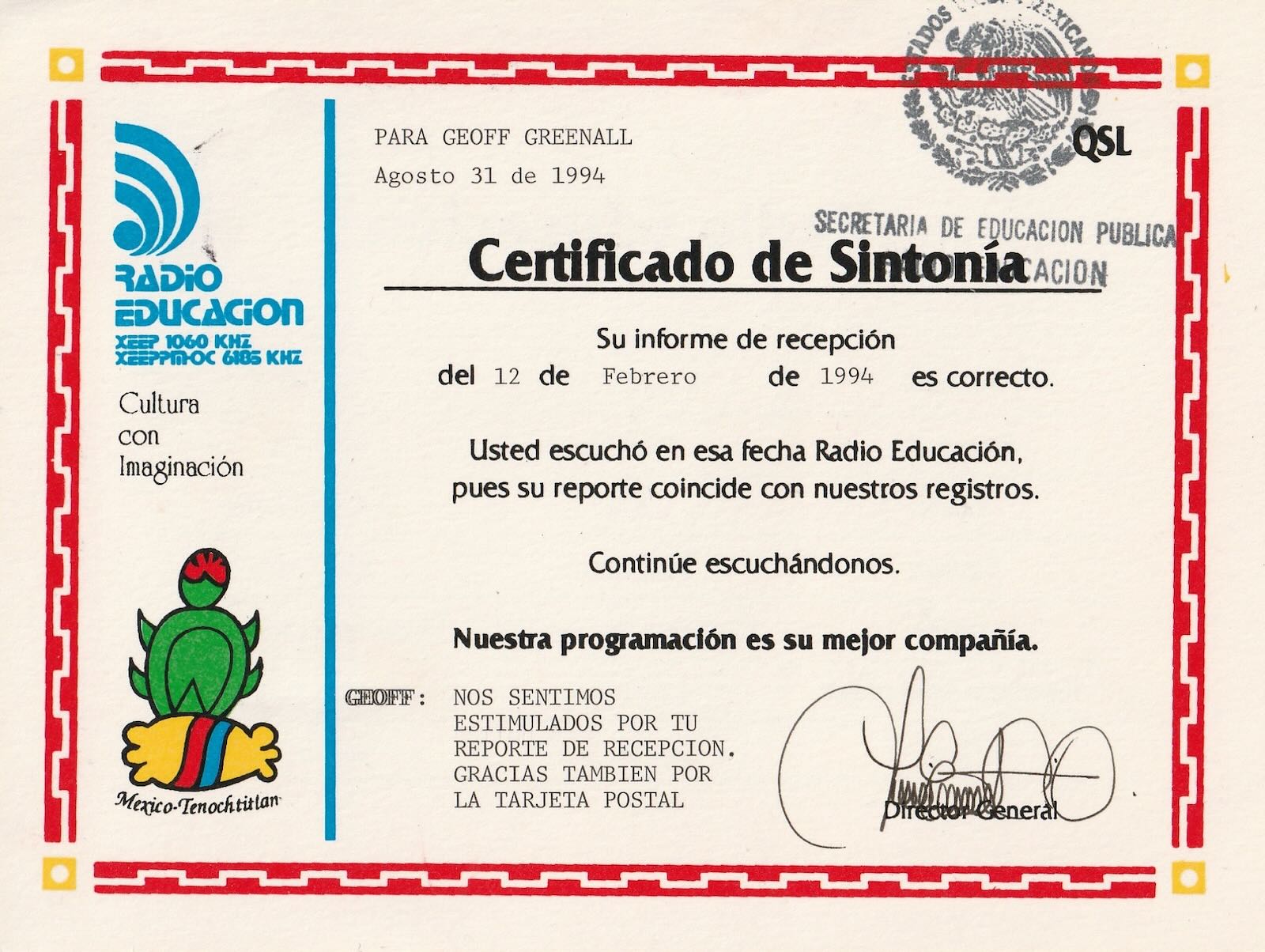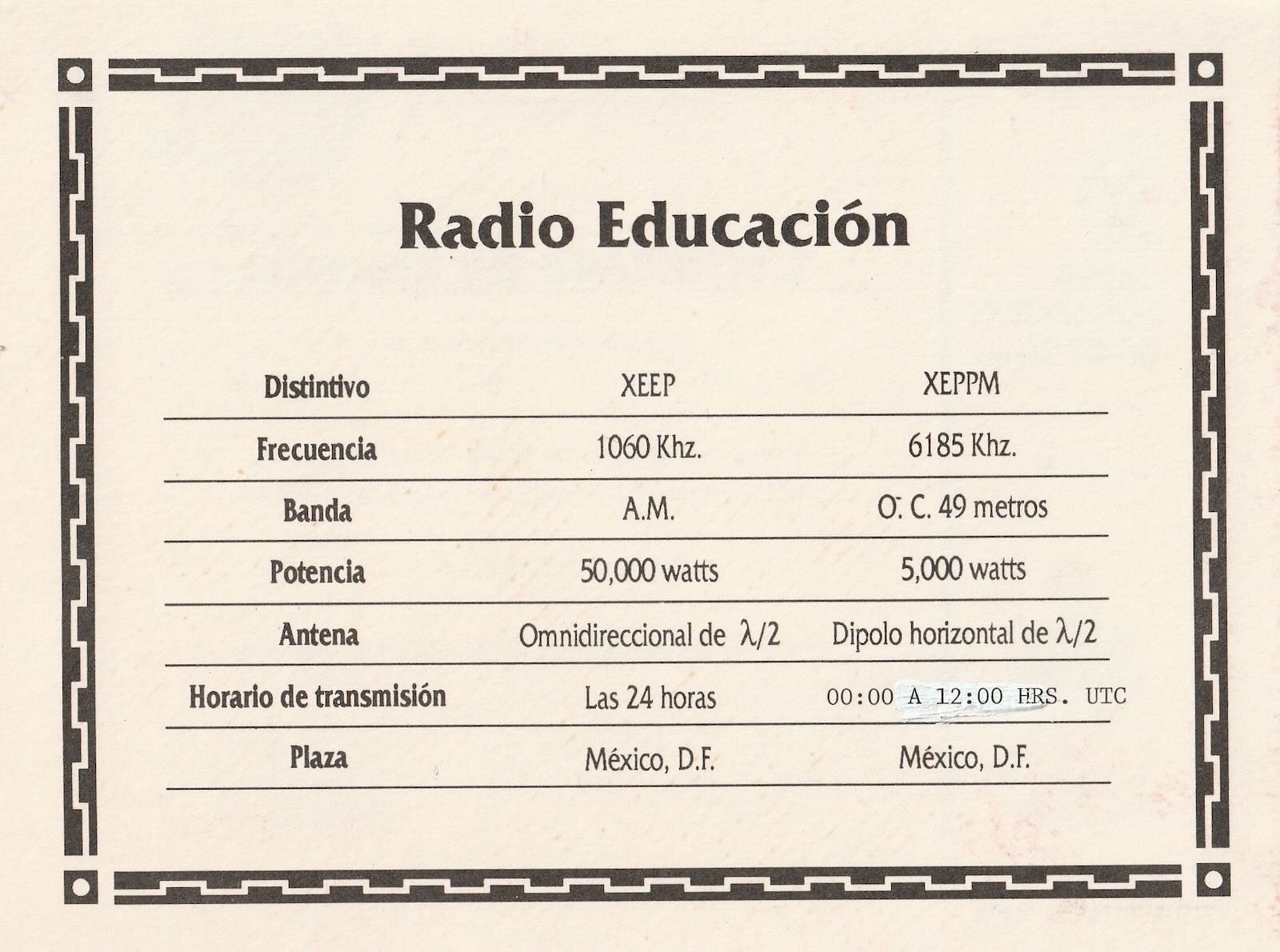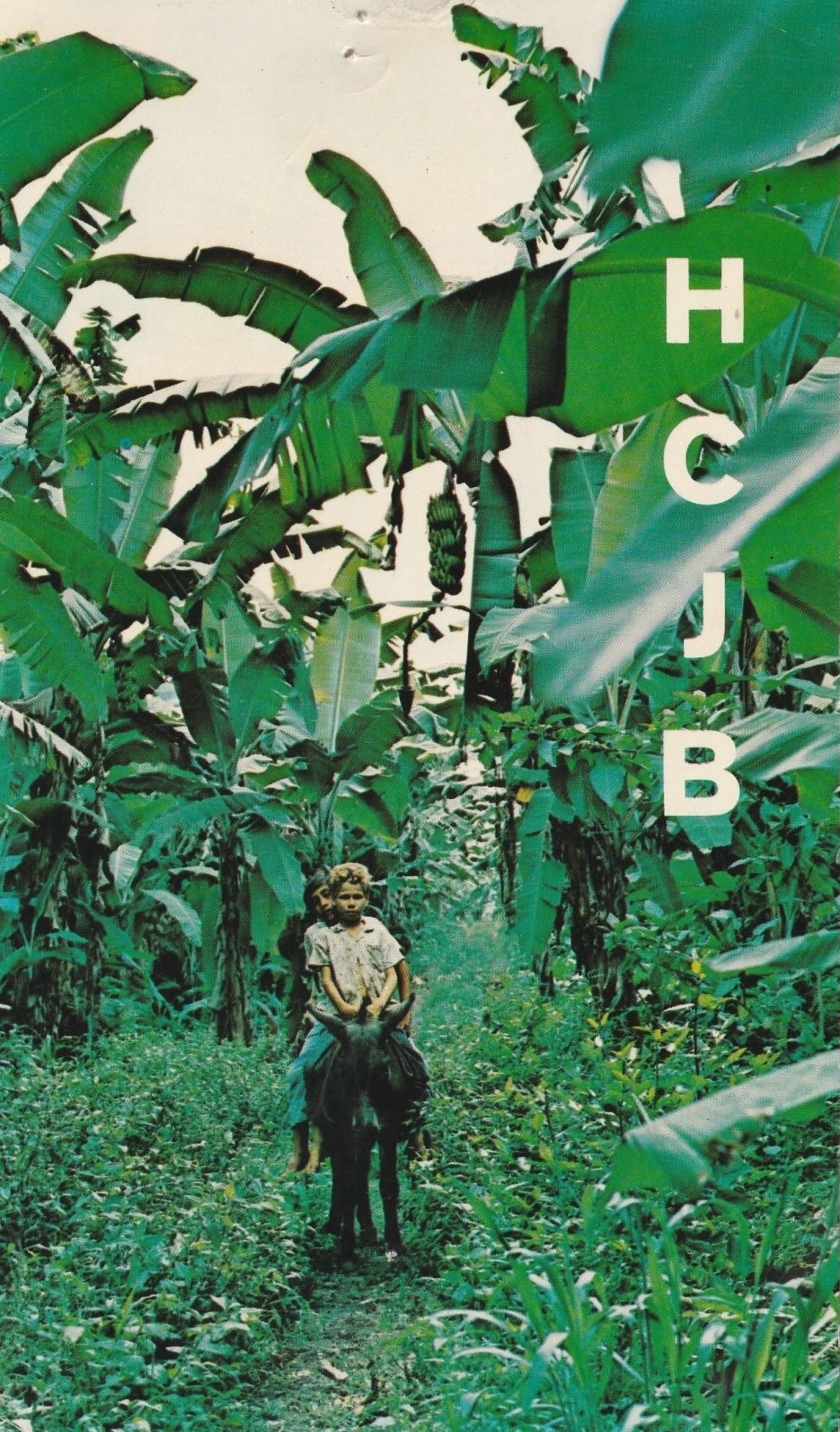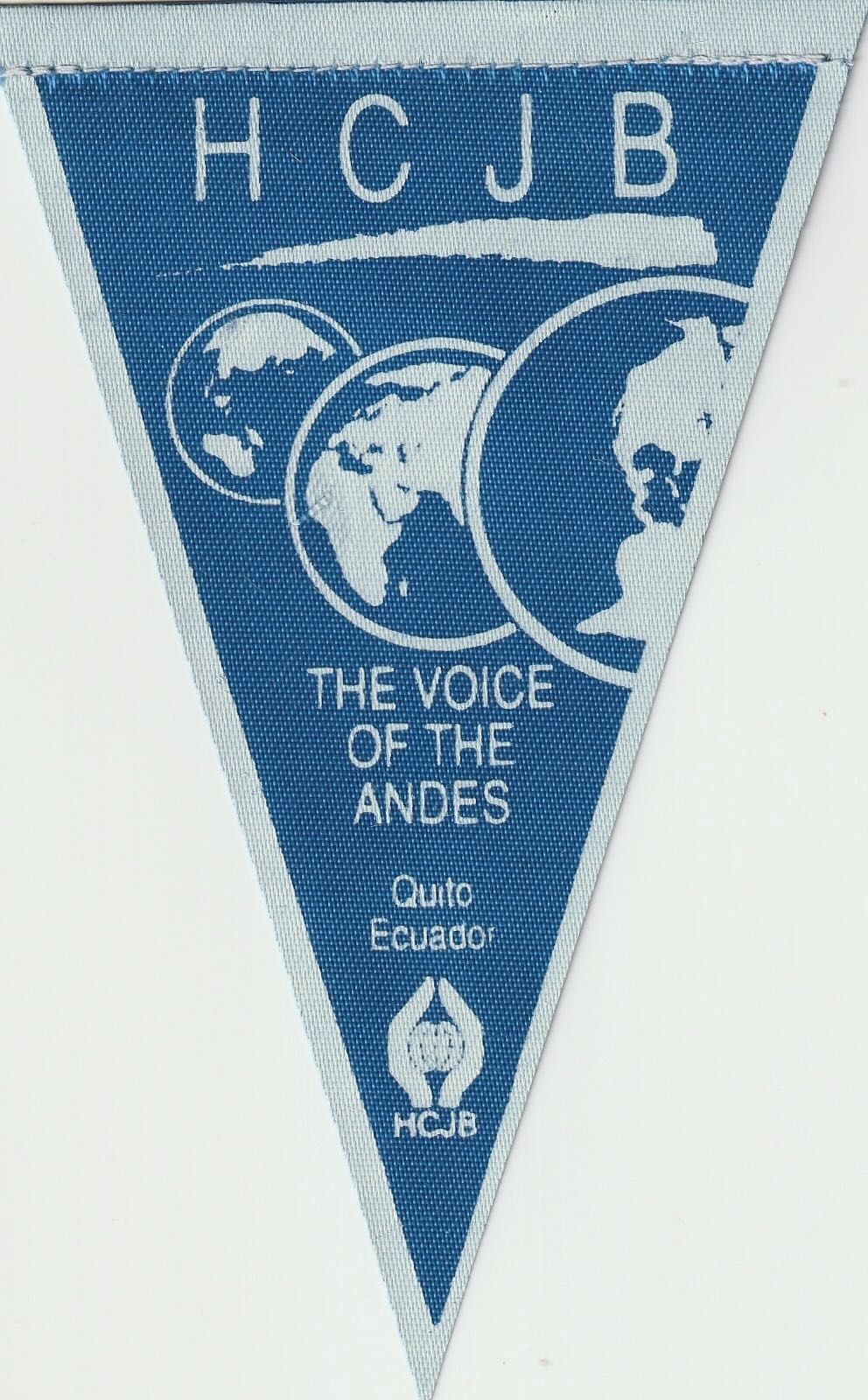Many thanks to SWLing Post contributor Dan Greenall, who shares the following post:
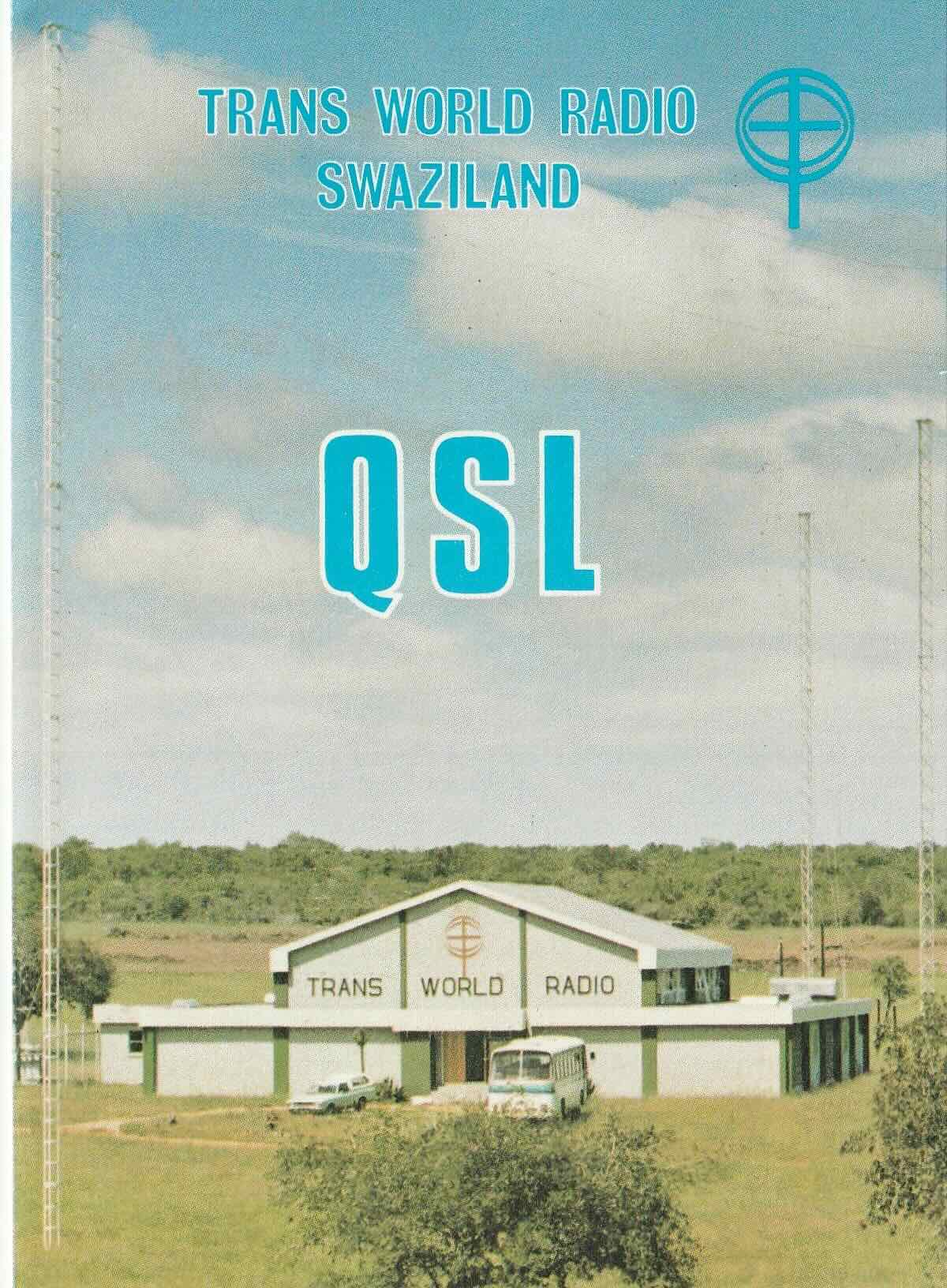 Much to the delight of DXers, Trans World Radio began broadcasting from the African country of Swaziland over 50 years ago. According to the 1975 World Radio TV Handbook, they had four 30 kW transmitters to conduct initial testing in the 90, 60, 49, and 41 metre bands. Their interval signal, played on hand bells, reportedly comes from the song “We’ve a Story to Tell the Nations” and has a music box feel to it. It would pause frequently for an ID in English. This recording was made on November 2, 1996, on 4750 kHz just prior to 0400 UTC sign-on: https://archive.org/details/trans-world-radio-swaziland-1996
Much to the delight of DXers, Trans World Radio began broadcasting from the African country of Swaziland over 50 years ago. According to the 1975 World Radio TV Handbook, they had four 30 kW transmitters to conduct initial testing in the 90, 60, 49, and 41 metre bands. Their interval signal, played on hand bells, reportedly comes from the song “We’ve a Story to Tell the Nations” and has a music box feel to it. It would pause frequently for an ID in English. This recording was made on November 2, 1996, on 4750 kHz just prior to 0400 UTC sign-on: https://archive.org/details/trans-world-radio-swaziland-1996
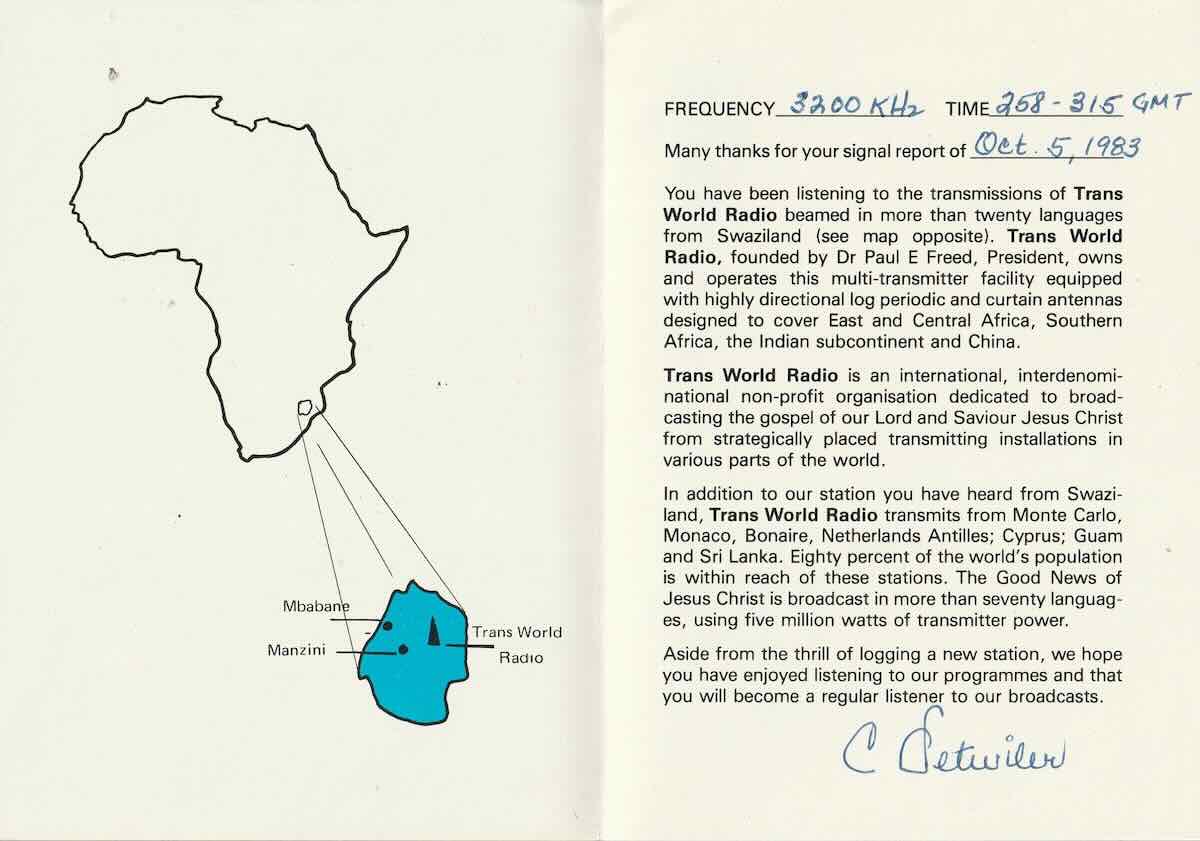 Today, the station is still on the air and follows the same format as in years past, except for the name of their country, which changed to Eswatini in 2018.
Today, the station is still on the air and follows the same format as in years past, except for the name of their country, which changed to Eswatini in 2018.
I chose a Kiwi SDR in neighboring South Africa to make this recent recording, on August 21, 2025 around 1359 UTC on 9585 kHz, leading up to the start of a program in the Portuguese language.

